“Hi! My name is Jana and I am a qualified BSc (Hons) HCPC registered podiatrist. My usual working day would be seeing patients in the wards, helping them to keep their feet healthy. In this footcare blog post, I will offer some tips and advice on foot care and how to help you keep your feet healthy and happy.”

What is personal footcare?
Personal footcare is the term we use for what a healthy adult would normally do for themselves for their own feet if they are able to. You can do a lot to keep your own feet in good condition.
This includes:
- checking that your feet are in good order
- keeping your feet clean
- caring for your skin
- keeping your toenails at a good length
- choosing and wearing good fitting footwear
- getting help if you notice a problem
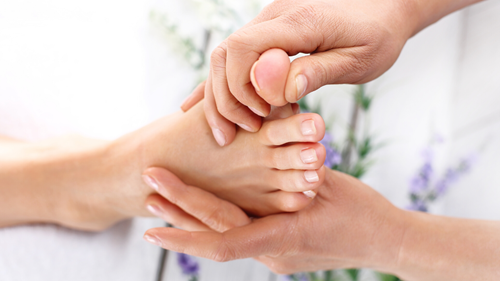
Good footcare is important no matter what age you are. Well cared for feet can improve your comfort, mobility, confidence, independence and have an impact on your overall quality of life. It is important that, as you get older you continue to get the most out of life and you are able to carry out activities that are important to you.
Checking your feet
To be able to see any problems quickly you should try and check your feet every day.
One way to check your feet is by using two chairs or stools of a similar height. Sit on one and face the other towards you. Bring your leg towards your chest and place one foot on the edge of the other chair or stool. Keep your other foot on the floor. It is best to do this where there is good natural light or in a well-lit room.
Check one foot at a time. Look at the top, the sole, the heel, and the toes and in between the toes.
- Are there any cuts or sores?
- Is there any blood or fluid leaking from a sore area?
- Look out for any changes such as redness, swelling or bruising.
If you can’t see the soles of your feet very well try placing a mirror behind your foot or ask someone else to check this for you.
If you have any concerns, or are worried about your feet, contact your NHS Podiatry Department or Health & Care Professions Council (HCPC) registered podiatrist if you attend one or contact your GP.
Keeping your feet clean
Wash your feet every day. If you are unable to get into the shower or bath regularly it may be easier to wash your feet using a basin.
Before you start make sure you have everything you need beside you – some mild soap, a soft brush such as a nail brush and a clean dry towel.
Fill the basin half full of warm water. Sit comfortably on a chair and place both your feet in the water. Use the soap to lather up and clean all areas of your feet making sure you get in between your toes. Use the soft brush to rub over the nails. Try not to soak your feet for too long – no more than 10 minutes is the rule otherwise you will dry out the skin.
Dry both your feet carefully taking care to pat dry in between your toes. If you find it difficult to dry in between your toes you could try using cotton buds or folded cotton wool pads.
Skin care
If your skin is dry apply a moisturising cream every day over the dry areas – usually the tops, the heel and the soles of the feet. Massage the cream in well using small circular movements. Do not put cream in between your toes.
If your skin is very moist, after your daily wash, use cotton wool that is wet with some surgical spirit to dab the soles of the feet and in between your toes.
It is natural for feet to sweat, however, sometimes this can be excessive. Sweaty feet can cause an odour with the skin between the toes becoming white and damp. That is why it is important to wash and dry your feet thoroughly every day.
You can remove small patches of hard skin from your feet by using a foot file or pumice stone. Gently rub the affected area in one direction.
Personal footcare kit
Some things that you might like to keep in a personal footcare kit are:
- Nail clippers
- Nail file or emery board
- Foot file
- Foot cream
You may want to keep these items together with some skin wipes in a plastic box or zipped plastic bag. You can buy nail clippers, files and emery boards in your local high street or online.
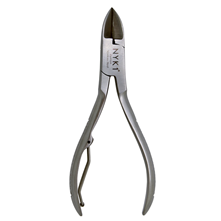
To keep your personal footcare tools clean and in good order wash metal and plastic items in warm soapy water after you use them. Rinse them in clear hot or cold water and allow them to dry thoroughly before storing them back in your plastic box or bag.
Preventing the spread of germs is very important and this is why you should have your own personal nail clippers and file and keep them for your use only. Always wash and dry your hands before and after cutting your toenails.
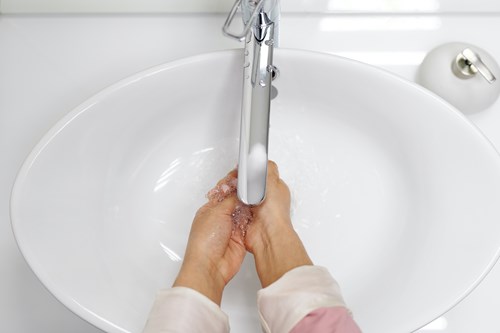
Cutting and filing your toenails
Are you sitting comfortably?
Before you start, make sure you have your nail clippers and file to hand. One way to cut your toenails is by using two chairs or stools of a similar height. Sit on one and face the other towards you. Bring your leg towards your chest and place one foot on the edge of the other chair or stool and keep your other foot on the floor.
Cut the toenails on one foot and then swap over and do the other foot when you are ready.
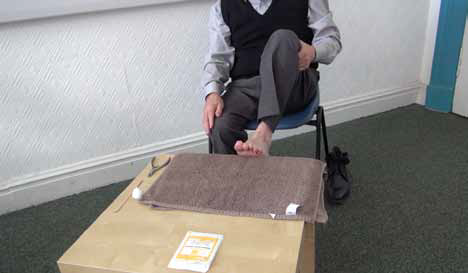
Cutting your toenails
To cut your nails make several small clips or nibbles on the nail with the tip of the nail clippers. Cut the nails following their natural shape. Aim to have the final length of the nail just below the tip of each toe.
Do not cut down the sides of nails as this can leave the surrounding skin uncomfortable.
Filing your toenails
Remove any rough edges using a nail file or emery board. File the nails in the direction away from the ankle or in a sideways motion from the sides to the centre of each nail. File thickened nails both in the length and the thickness.
It is easier to file nails when they are dry and filing nails once a week will keep them at a reasonable length.

You do not need to cut or file all 10 toenails at one go – you can spread this out over a number of days if this is more suitable for you.
When you are finished wash your hands and throw the nail clippings in your bin.
You may prefer to file your nails regularly and this avoids the need to clip your nails.
Footwear
Footwear means, shoes, slippers, socks or tights – anything that goes on your feet. Wear shoes that are suited to the activity you are doing.
A good shoe should support and protect your foot and allow natural movement during walking. Poorly fitting footwear can cause problems, such as corns, calluses and ingrowing toenails.
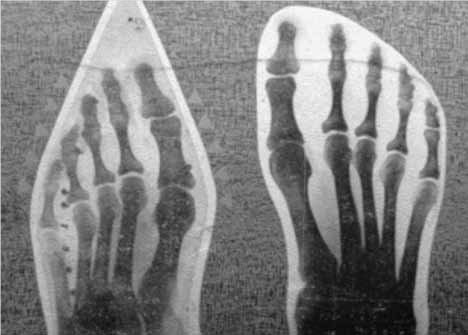
Hosiery
Socks should contain a high proportion of natural materials such as cotton or wool – this allows sweat to evaporate from the skin. Wear wool in winter for warmth and cotton in summer for coolness. Make sure socks and tights are not too tight – or pulled up too tight and cutting into the skin.
Top tips for good footwear
- Upper – made of leather or breathable natural or synthetic materials with seam-free linings
- Toe-box – deep and roomy at the front of the shoe to prevent pressure on the toes and joints on the side of the foot
- Sole – cushioned and flexible with good grip
- Heel – no more than 3cm (1½") high and broad enough to provide stability
- Fastenings – laces, buckles or velcro straps hold the shoe comfortably and securely on the foot
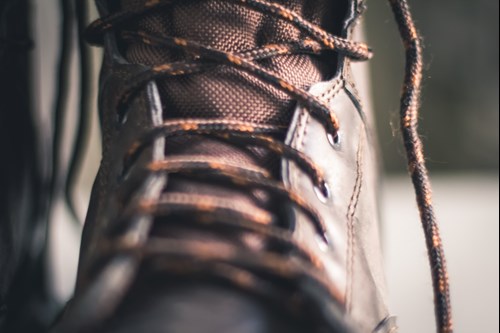
What to do if you have a foot problem
These are some foot problems that might cause some concern.
Look out for:
- If your toe or part of your foot is red, hot, and swollen, painful, leaking blood or fluid such as pus.
- If you have any of these and are worried about your feet, then contact your local NHS podiatry department or your GP practice for advice.
If you are looking for general information on footcare have a look at the NHS inform website, or ask your local chemists or pharmacy or your local NHS podiatry department.
For more information on footcare why not read our read our Q&A with Podiatrist Chris Lynas
Acknowledgements and copyright
All of the information was used for the sole purpose of education under the terms of the Open Government Licence. The original file is Personal Footcare – Looking after your feet and can be accessed on the Personal Footcare homepage:
http://www.knowledge.scot.nhs.uk/home/portals-and-topics/personal-footcare.aspx




 Donate
Donate